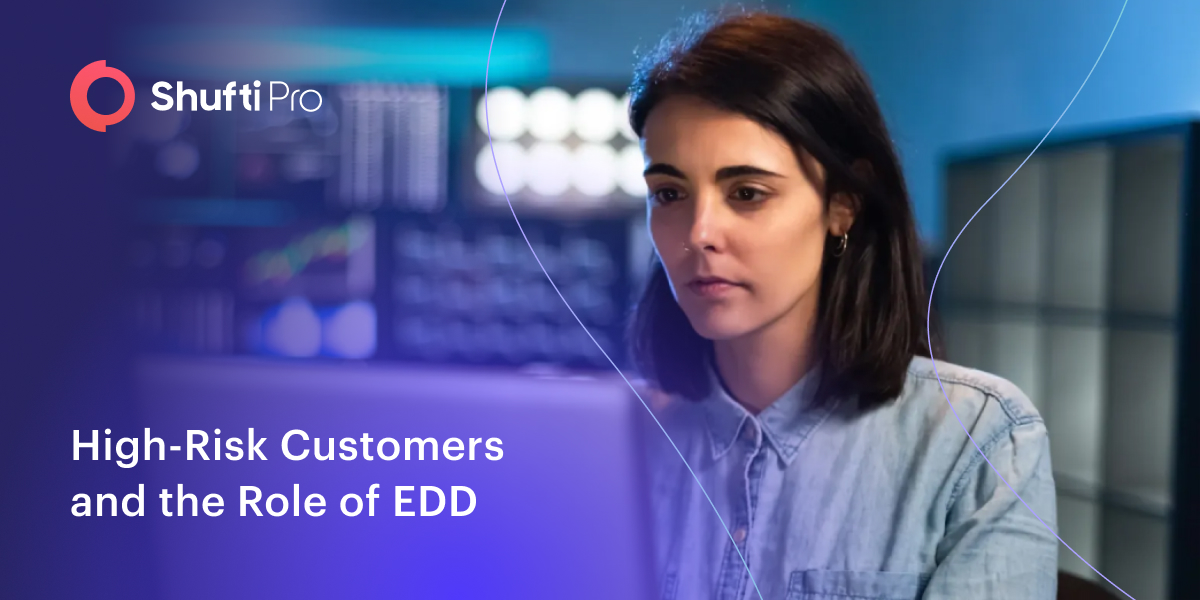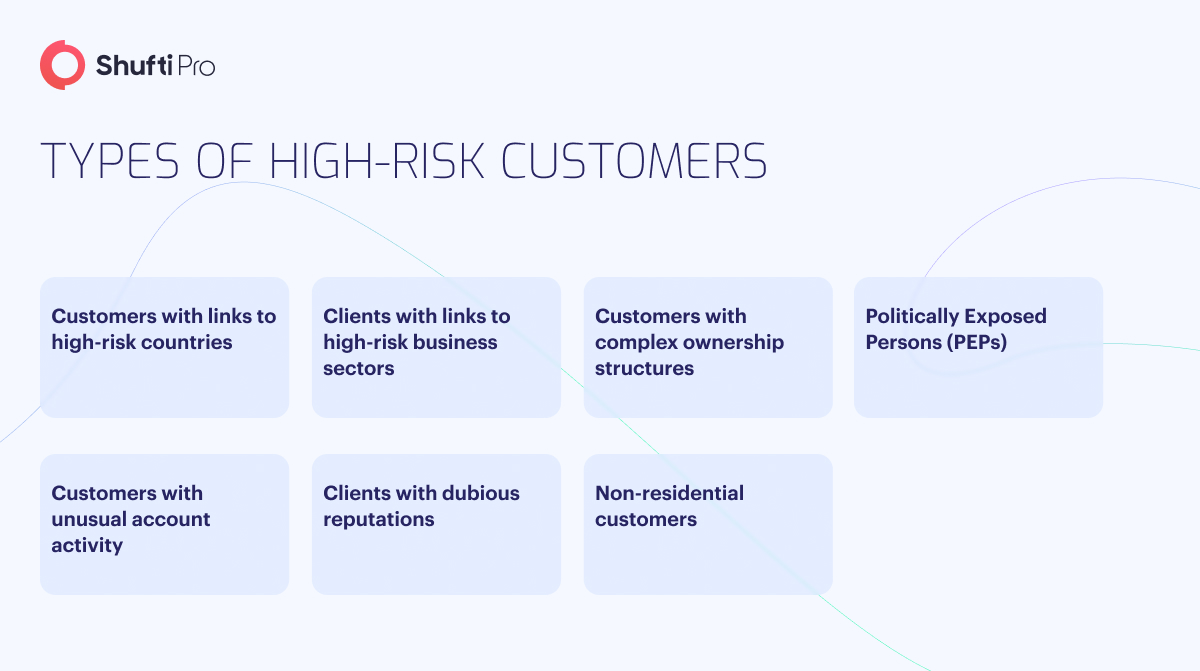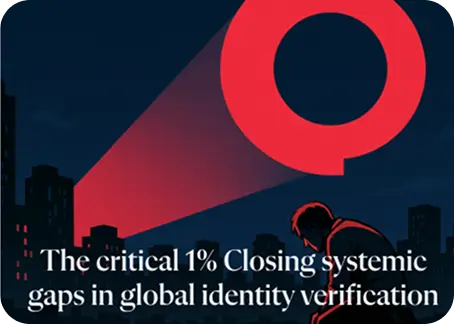High-Risk Customers in Banking and How EDD Can Help Identify Them

In this age of digitisation, banks and other financial institutions face a high risk of money laundering and fraud. Approximately 2 – 5% of global GDP is laundered annually. It’s difficult to calculate the total money going through the laundering cycle due to the confidential nature of money laundering. Thus, identifying high-risk customers has become necessary in this digital age. This is where Enhanced Due Diligence (EDD) comes to the rescue.
How Do High-Risk Customers Impact Banks?
One of the significant challenges that banks face whilst dealing with high-risk clients is heavy non-compliance fines, damaging their brand’s reputation. Not only this but there is a risk of onboarding individuals who may exploit the financial institution. This can result in:
- Increased chargeback rates and acquisition costs
- Defaulting loan clients, which will damage your bottom line
- Account Takeovers (ATOs), where scammers take hold of your current clients’ accounts, damaging your reputation
- Confidential data leaks, incurring regulatory and reputational risk
Let’s have a quick look at who are high-risk customers:

Understanding Enhanced Due Diligence
EDD represents any business’s comprehensive Customer Due Diligence (CDD) strategy, addressing greater transaction risk linked with high-risk clients. EDD involves checking customers’ backgrounds, sources of funds, transaction patterns, financial assets, and business certificates thoroughly. EDD requires additional identifying information to improve risk management compared to standard CDD in banking. Several jurisdictions have enforced stringent regulations such as the 6th Anti-Money Laundering Directive (6AMLD) of the EU to conduct enhanced due diligence for high-risk customers.
An Example of EDD
EDD is required for high-risk customers such as Politically Exposed Persons (PEPs). As per FATF standards, PEPs are considered high-risk clients as they hold a position that can be misused for money laundering.
To identify PEPs, a firm should check the following:
- Whether they are foreign or local PEPs
- What is the type of PEPs, such as a chief of staff and a politician
- Whether the PEPs hold their existing position
- What is the duration at which they had such a role
- What are the PEPs’ sources of funds
How to Perform Enhanced Due Diligence?
Here’s a quick overview of the EDD process:
1. Adopt a Risk-based Approach (RBA)
To implement a risk-based approach, the initial step involves evaluating your customers based on risk factors and assigning a risk level to each client. Only high-risk customers, particularly those from high-risk countries, must undergo EDD.
2. Obtain Additional Information for Verification
Standard CDD requires basic identification details, such as name, Date of Birth (DOB), and residential address and other government-issued identification documents. EDD in banking, necessitates obtaining additional documentation to verify identity, employing multiple external documents.
3. Establish Origin of Funds and UBOs
It is essential to obtain information regarding the origin of the customer’s wealth. Comparing the value of their non-financial and financial assets to their tangible assets ensures consistency. Any discrepancies in their net worth or earnings raise suspicion and warrant further investigation. Additionally, it is crucial to identify the Ultimate Beneficial Owners (UBOs) of the customer’s organisation and verify their identity.
4. Monitor Ongoing Transactions
Analyse the client’s transaction history, involved parties, transaction processing time, and the nature and purpose of the transactions. Inconsistencies between the forecasted value of services and the actual amount received or paid indicate suspicious activity. Transaction monitoring plays a significant role in the client onboarding process.
5. Check for Adverse Media Coverage
Established involvement in financial crimes raises the risk level of your business. Conduct an analysis of media coverage concerning the customer to gather information about their reputation and track record. Identify any adverse media mentions and PEPs. Even if unfounded, previous allegations of financial misconduct require heightened future monitoring.
6. Conduct an On-site Visit
Visit the customer’s physical business address to confirm their identity and ensure that their operational location aligns with the information they provided. Inconsistencies between the provided addresses and the actual findings, or unexpected findings that differ from the customer’s presented information, raise concerns. On-site visits are necessary to get physical verification documents that can’t be obtained digitally.
7. Create an Investigation Strategy Report
Upon completing the aforementioned steps and determining that the client is not excessively high-risk for an ongoing relationship, it is essential to document your EDD plans for monitoring the client. This report should include a schedule indicating specific monitoring activities and be securely stored along with all the gathered information.
8. Develop an Ongoing Monitoring Strategy
Certain transactions might not raise suspicion individually but can show illicit activity when viewed as part of a broader pattern of behaviour. Devise a strategy for continuously monitoring the client, which should involve reviewing the provided data.
Benefits of Enhanced Due Diligence
EDD empowers organisations to handle high-risk clients and transactions effectively, reducing the likelihood of legal penalties, financial losses, and reputational damage whilst ensuring compliance with regulations. The benefits of implementing EDD include:
- Enhanced Risk Management: EDD aids in the more effective identification of high-risk transactions from clients, leading to a reduction in financial and reputational risks.
- Improved Compliance: EDD ensures adherence to regulatory requirements, minimising the possibility of legal penalties and regulatory sanctions.
- Informed Decision Making: EDD provides comprehensive insights into potential risk factors, enabling organisations to adopt a robust risk-based approach.
- Strengthened Customer Relationships: Implementing EDD showcases a commitment to compliance, fostering more robust customer relationships and avoiding engagement with those at higher risk of money laundering.
- Increased Efficiency: EDD simplifies the ongoing monitoring processes, facilitating organisations in addressing issues proactively.
How Can Shufti Help?
Shufti is a go-to option for businesses that want to mitigate the risk of money laundering and other financial crimes. Enhanced due diligence helps companies manage high-risk customers and transactions effectively while ensuring regulatory compliance.
Here’s how our enhanced due diligence protects banks and other businesses from financial crimes:
- Data Verification: The EDD process validates customer identification information, funds, and wealth related to transactions using multiple external data sources, ensuring accurate risk evaluation.
- Automated Analysis: We conduct in-depth analyses of financial activities, business documents, and transaction histories, generating detailed reports with insights into potential red flags or suspicious activities.
- Red Flag Detection: The EDD process detects and flags red flags and suspicious activities, such as unusual payment patterns or links to high-risk entities, enabling timely action.
- Comprehensive Documentation: We maintain detailed documentation and audit trails throughout the EDD process, facilitating future reference and compliance.
- Ongoing Monitoring: We offer a robust ongoing monitoring strategy, updating risk profiles and providing alerts on changes in risk levels, enabling proactive risk management.
Still confused about how to identify high-risk customers in banking?










